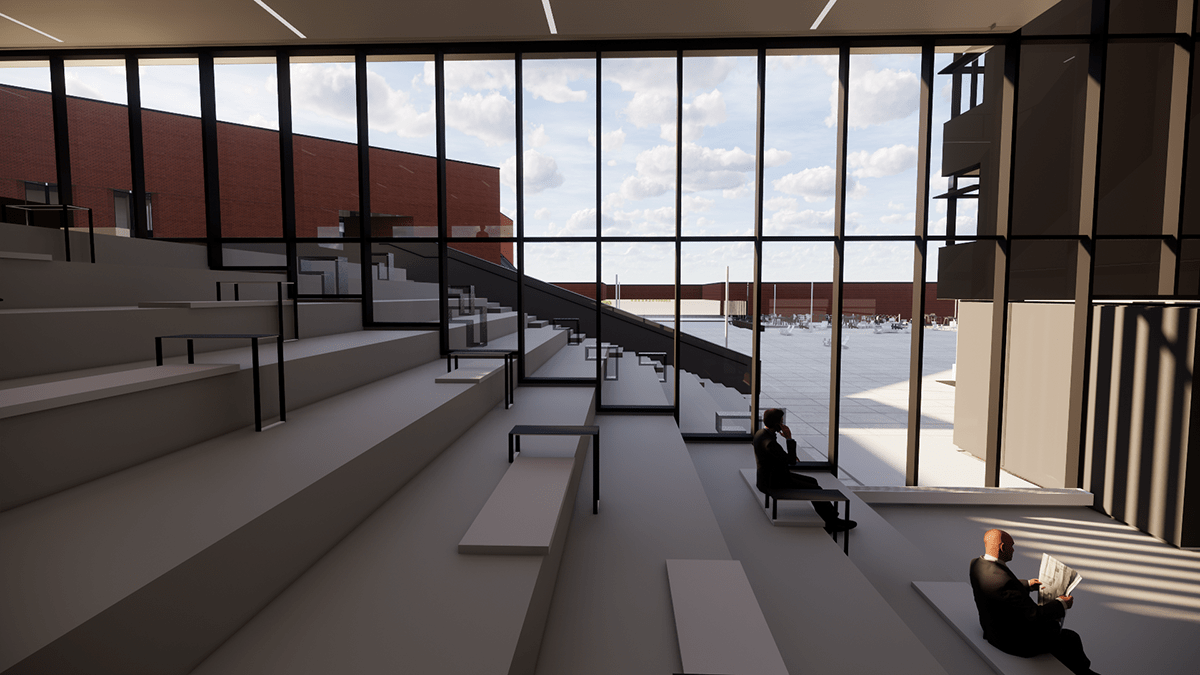Imagine walking into the office, greeted by the trilling of your phone with the day’s schedule. Because you don’t have an assigned desk, the building tells you where to go, based on your meeting schedule for the day and preferred work space—maybe a standing desk or a spot in a sun-filled atrium. As you settle in with your laptop, the room sets the temperature and lighting to meet your comfort level. At the end of the day, you grab dinner from a bank of gourmet meal options, made to order with the scan of a QR code.
This isn’t Hollywood’s idea of a futuristic workplace. It’s happening now in Amsterdam at the Edge, Deloitte’s European headquarters.
Assistant Professor Ming Hu recognizes the Edge as a harbinger of what’s to come. Her new book, Smart Technologies and Design for Healthy Built Environments, out this month from Springer, explores how the sustainable building movement is ripe to address an emerging facet of green building design: one that’s good for a person’s physical, biological, physiological and psychological health. From adjusting a room’s temperature by sensing the number of occupants, to a closet that can suggest temperature-appropriate clothing, a mesh of smart technologies and health-promoting design features could be the next big building movement.
“If we identify the period from the 1990s to the present day as an era of sustainable building, then the next couple of decades could be the era of healthy and smart buildings,” says Hu. “Professionals in the built environment are increasingly using public health as a criterion for design or planning.”
Building for human health in mind is not new, says Hu; it goes back to the beginning of human civilization. With the standardization of energy conservation in design and construction, the industry has seen a shift towards “healthy” buildings—buildings that are not just good for the environment, but good for the occupants and centering on features that promote productivity and creativity, physical health and lower stress levels. The advent of smart technologies has allowed designers to move from structures that offer static benefits to ones that evolve and adjust; data, says Hu, plays a central role, allowing a building to “learn” from its inhabitants’ needs. Combined with integrated technologies and systems—like machine learning, “smart” objects and the Internet of Things—buildings can be transformed into responsive, intelligent bricks-and-mortar super computers.
“Smart buildings can really change the way we approach public health,” says Hu. “Most smart tech was initially invented to help people. This is just an innovative progression of that idea.”
Smart Technologies provides a snapshot of state-of-the-art technologies making waves in building design and construction, from self-learning and responsive systems, to dynamic operability and energy efficiency, and connects them to the primary components of human health. Three case studies show how smart technologies and healthy design techniques work collaboratively to capture these factors and optimize the buildings’ systems accordingly. The Edge’s 28,000 sensors and ethernet-infused light panels are just part of its design package, a “pie-in-the-sky” collection that earned it the title of “Smartest Building in the World” by Bloomberg News in 2015. Another case study offers a more affordable option—a Smart Home in a Box (SHiB), designed by researchers at Washington State University to help the disabled and elderly live more independently. The home’s sensors continuously send data to a monitored central control system, where algorithms can monitor activity and health—such as a sudden fall—and even identify future medical challenges. At just $2400, it has already been deployed to roughly 100 units around Washington State.
While the book will appeal to anyone interested in technology or the built environment, Hu acknowledges she wrote it with a younger generation in mind; not just architects, but also engineers and computer scientists, whose work will continue to intersect in the age of smart buildings. And while the future of healthy buildings may conjure visions of Big Brother for some, Hu suggests that the benefits should outweigh any apprehension.
“Don’t be afraid of smart technology,” she says. “More than ever, I see it as the path forward for a sustainable, enriching way of life.”

